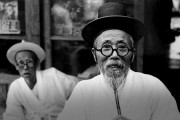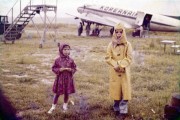On June 30, 1983, KBS launched a television special that would change Korean history. “Reuniting Separated Families” featured South Koreans who had lost family members during the upheaval of the Korean war. During the live broadcast, the family members would describe their lost sibling, child, or parent, and in some cases, even reunite with them for the first time in thirty years. Broadcasting for 138 days and nearly 453 hours, the program displayed information to an audience of millions and led to the reunion of 10,189 separated families.
Considering how long it had been since the end of the Korean War, some may wonder why it took a television program to reunite families. There are two reasons for the long period of separation. During the immediate postwar decades, the government had been trying to focus solely on economic recovery. Due to political and economic instability, reuniting displaced families was not given a high priority. The decision to start a live broadcast special in order to reunite displaced families only occurred to KBS in 1983 because producers began to hear about the tragedy during research for a separate television show. The second reason for the delay in reuniting families was the low level of television ownership among Korean households, something which had changed by the early 1980s. By the end of the broadcast in November of 1983, 78% of all Korean television viewers were tuning in to see the live reunions, the highest ratings for any single show in Korean history.
The 1988 Seoul Olympics and “Reuniting Separated Families” were two of the most important events in South Korea during the 1980s. The television show directly lead to the launching of “Reunions of Separated Families for Sakhalin-Koreans” in the 1990s. In addition, there are unmistakable similarities between the South Korean reunions and the more recent highly publicized North-South Korean family reunions.
Between 1997 and 2007, the KBS morning talk show Achim Madang included a regular segment called, “I miss them”(그 사람이 보고싶다)”, which was also devoted to reuniting family members. Most applicants for the segment had lost their family after the Korean War and a large portion of them were Korean adoptees who grew up overseas. Since 2012, the program changed the title of the segment to “I am looking for them(생방송 사람을 찾습니다)” and split it off as a separate program.
KoreaBANG has received permission to publish the following ten photos related to “Reuniting Separated Families” taken by well-known photographer Jo Rim-hwan in 1983. Although the photos are not from inside the television studio, they show the area nearby in front of the National Assembly Building. During the broadcast, thousands of people brought posters and signs to the front of the National Assembly, where television cameras would pass by and give them a chance at a nationwide audience.
Mr. Jo included the following letter with his photos:
I appreciate you having a sincere interest in my photos about the separated families. Thirty years ago, in 1983, I took photos at the site and selected 120 of them for my personal exhibition. Upon request from KBS, thirty of them were released to the public.

People sit in the street and watch the broadcast. One of them has a sign on his back with the name of a lost family member.

A man looks for his separated family members, including his father, mother, brother and two sisters from Hwanghae-do, North Korea.

A woman and child sit on the stairs by the National Assembly building holding signs with the names and descriptions of family members.

On the steps of the National Assembly building, a man holds a sign describing his lost family members.

A man searching for his eldest sister and father holds a sign with their description: The father had lived in Seoul, his second sister had lived in Gunsan, Jeollabuk-do. His grandmother was blind and died in Gunsan. After the day of liberation on August 15th, they lost touch with their sister and father.

Searching for family, people hung thousands of posters on walls and on the ground to make them visible.
More historic photos from Mr. Jo can be found here at his website.
Comments from Naver:
arabika (hyuk****):
A tragedy of a divided country.
rabbitson (tobe****):
I feel a sense of desperation that defies description. Despite enduring a deep sorrow in their hearts, they live as best they can.
mg5768 (ming****):
At that time, it was really incredible.. The concrete in Yeouido Park cracked under the weight of all the people coming in, even from foreign reporters in a great frenzy to get the story..
도둑괭이 (hong****):
I was searching for this story after I heard it from my father.. It made me cry.. I didn’t know that Korea has national tragedy and deep sorrow like that. I feel ashamed when I think of how easy my life is and how comfortable I am.. I think it is impossible to define Korea without a sense of deep sorrow.
달곰 (ibae****) :
I still remember seeing one scene with two sisters.. The older sister was waiting for her sister in front of the KBS main hall. Her sister was coming in a taxi. When it arrived, the younger sister didn’t even wait for the car to stop before getting out and running to embrace her big sister. They wept so hard..
(wndb****):
It was so heartbreaking.. I can’t imagine how they could live apart and endure this sad situation… so sad it was..
(dong****):
Just looking at a single photo made me cry…
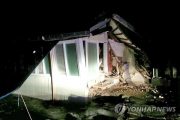
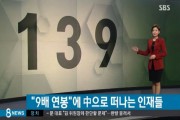
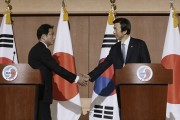


![A scene from the KBS program, "I miss them" [click image for link to video]](https://www.koreabang.com/wp-content/uploads/2013/07/kbs1-그사람이보고싶다.jpg)



